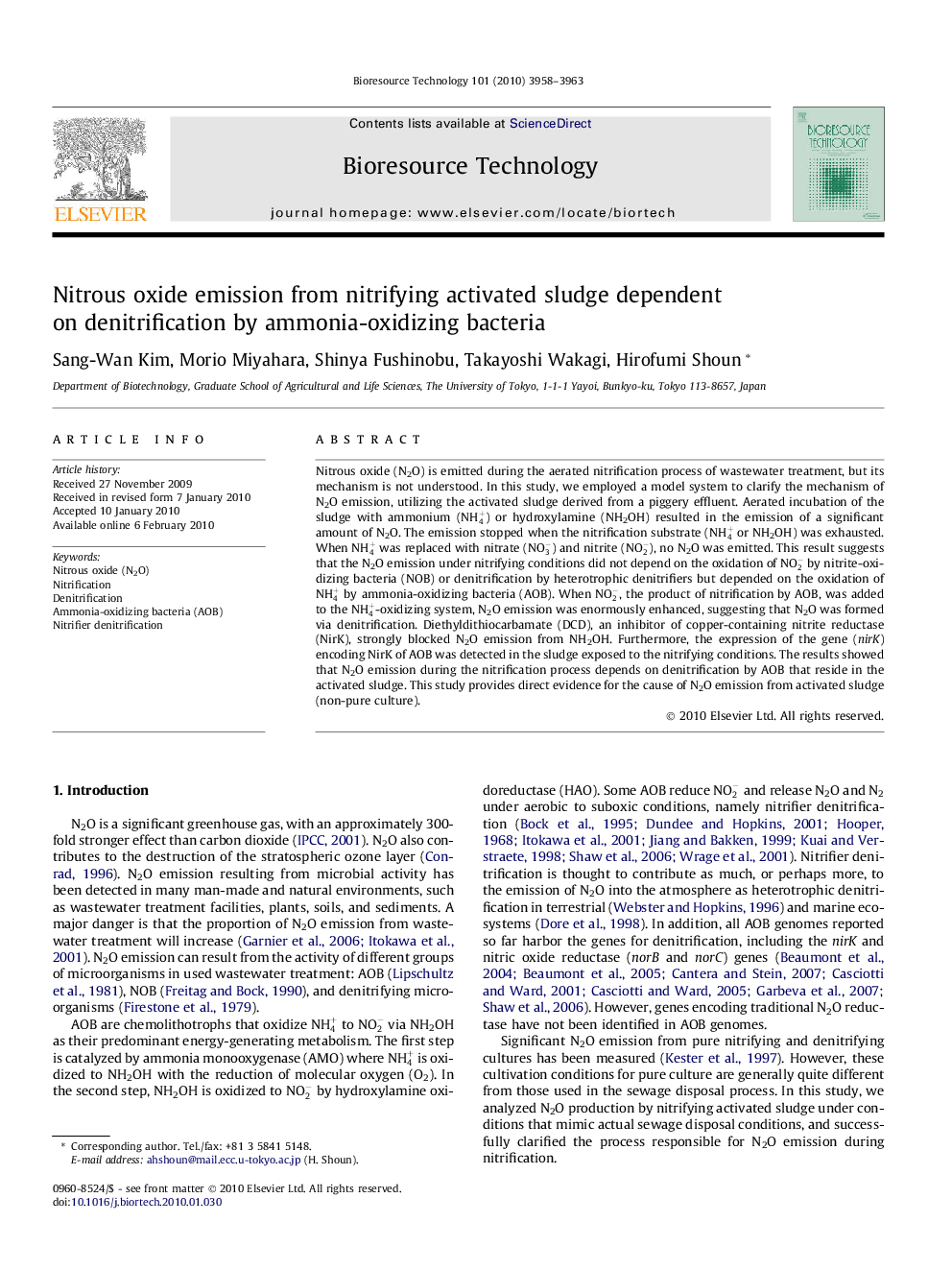| Article ID | Journal | Published Year | Pages | File Type |
|---|---|---|---|---|
| 683544 | Bioresource Technology | 2010 | 6 Pages |
Abstract
Nitrous oxide (N2O) is emitted during the aerated nitrification process of wastewater treatment, but its mechanism is not understood. In this study, we employed a model system to clarify the mechanism of N2O emission, utilizing the activated sludge derived from a piggery effluent. Aerated incubation of the sludge with ammonium (NH4+) or hydroxylamine (NH2OH) resulted in the emission of a significant amount of N2O. The emission stopped when the nitrification substrate (NH4+ or NH2OH) was exhausted. When NH4+ was replaced with nitrate (NO3-) and nitrite (NO2-), no N2O was emitted. This result suggests that the N2O emission under nitrifying conditions did not depend on the oxidation of NO2- by nitrite-oxidizing bacteria (NOB) or denitrification by heterotrophic denitrifiers but depended on the oxidation of NH4+ by ammonia-oxidizing bacteria (AOB). When NO2-, the product of nitrification by AOB, was added to the NH4+-oxidizing system, N2O emission was enormously enhanced, suggesting that N2O was formed via denitrification. Diethyldithiocarbamate (DCD), an inhibitor of copper-containing nitrite reductase (NirK), strongly blocked N2O emission from NH2OH. Furthermore, the expression of the gene (nirK) encoding NirK of AOB was detected in the sludge exposed to the nitrifying conditions. The results showed that N2O emission during the nitrification process depends on denitrification by AOB that reside in the activated sludge. This study provides direct evidence for the cause of N2O emission from activated sludge (non-pure culture).
Keywords
Related Topics
Physical Sciences and Engineering
Chemical Engineering
Process Chemistry and Technology
Authors
Sang-Wan Kim, Morio Miyahara, Shinya Fushinobu, Takayoshi Wakagi, Hirofumi Shoun,
